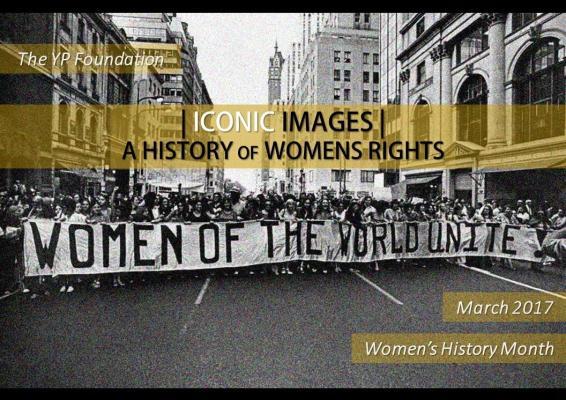March 8th is celebrated annually as International Women’s Day, with March being celebrated as ‘Women’s History Month’. In an effort to expand the scope and audience of these celebrations, through March-April 2017, TYPF sought to highlight key moments in the history of women’s rights through 3 projects – a collection of essays, an interview series, and a crowd-sourced visual media project. The focus of these projects was women, their challenges, their fight, their history and their present.
March 8th is celebrated annually as International Women’s Day, with March being celebrated as ‘Women’s History Month’. In an effort to expand the scope and audience of these celebrations, through March-April 2017, we sought to highlight key moments in the history of women’s rights through 3 projects – a collection of essays, an interview series, and a crowd-sourced visual media project. The focus of these projects was women, their challenges, their fight, their history and their present. The aim was push our audience, our participants and ourselves to think outside the confines of traditional feminist constructs, remembering that there is nothing too challenging, nothing too controversial, and nothing too thought provoking.
The first project launched was a series of articles, “A Woman’s Right in Indian History” that highlighted moments across women’s history in India. This was a product of our internship programme and was led by Shannon Mathew. These moments were chosen for their significance in their historical as well as contemporary context, i.e. for their ability to provide a lens into the past while being an entry point into more current matters. The series started off with an account of an important watershed moment in women’s history, the anti-rape mobilizations of 1980 and the subsequent birth of national-level women’s organizations. Turning the clock back by a few decades, Shannon revisited the history of sexual and reproductive rights health and discovered the Indian roots of the International Planned Parenthood Federation (IPPF), an international body that protects and promotes SRHR. The progressive image painted by this article was challenged by the next one which detailed the Surrogacy Bill of 2016 and whether it was a step in the right direction, a hit and miss, or simply another way of policing women’s bodies. The issue of policing women’s bodies has been at the heart of every women’s movement, and recounting the revolt of the Shanar Women critiqued the ‘protection of modesty and honour’ argument to reveal a more deeply rooted power-play tactic.
The second project, “Movers and Shakers: In Conversation with History”, was a series of interviews with individuals who have made invaluable contributions to the women movement in India. Through Movers and Shakers, we wanted to highlight key moments in women’s history as seen through the eyes of someone who witnessed it unfold. Our conversations gave us a glimpse into their lives, experiences and how they found themselves to be intertwined with the history of their sisters. Chayanika Shah provided us with an introspective account of the history of autonomous women’s rights movements in India; Manasi Pradhan spoke to TYPF about making history in Orissa as a pioneer of women’s rights. Saba Dewan talked about how her work as a filmmaker found a voice through communities wronged by history and long-forgotten by it, and then Christina Dhanraj talked about the complexity of being a women and a Dalit in India, both severely discriminated against identities. In fact, the last interview even proved point of intersection between women’s history month and Dalit history month, the latter being an idea that Christina co-founded.
Our final project, “Iconic Images: A History of Women’s Rights”, was a globally sourced online project which visually recognized moments across women’s history movements around the globe. Through Iconic Images we wanted to re-introduce these moments to the public memory, be it highlighting lesser known aspects of well-known incidents or bringing to the limelight unknown events which are no less significant than their famous counterparts. Contributors were urged to submit images that could offer previously unheard of perspectives, or be the starting point of a discussion that forces the mind to re-evaluate and question the accepted narrative. We received entries from the countries all over the world, from the Phillipines and Pakistan to Ukraine and France. Submissions ranged from detailing the continent-wide women’s protest across South America on International Women’s Day 2016, to protests against Pass Laws in South Africa in 1956. Another took us back to the Stonewall Riots in 1960’s USA through the work of transgender activist Marsha Johnson, to the first transgender model in Pakistan in 2016. These images were significant in capturing the essence of a struggle, and they allow us a glimpse into a moment that was either unforgettable or one that faded into the pages of history. But what they remind us is that it is important to recognize that no matter how small or large an event may seem, where we stand now is inextricably linked to each and one of these struggles.
Women’s History Month is a celebration of everything women have endured, fought for and won. But more than a celebration, it is a reminder of our past; a reminder of the insurmountable odds that were conquered by our sisters and predecessors. It is due to their resistance and resilience that we have reached a point where we can put up a united front against the conservative push back on women’s right. And while fighting this external battle, to be able to introspect, critique ourselves and fine-tune the movement, is a huge victory in itself.

